As celebration of our one year of World Travels, we flew north to Cusco where we spent ten days touring the Sacred Valley, Rainbow Mountain, and Machu Picchu.
Our trip started with an early morning flight, then a 2.5hr drive from Cusco plus an extra 3 hours before our check-in time, and a miscommunication regarding our reservation. (Let’s just say, either Booking.com isn’t always accurate or some properties aren’t updating their information).
Despite the miscommunication with our reservation, the kindness of the locals turned our exhaustion into gratitude. Before check-in, we wandered into the small town of Chinchero where we enjoyed historical structures and fed llamas and alpacas. The softness of their fur was what I imagine floating on a cloud would be like. We were then shown how local artisans transform alpaca wool into vibrant threads using natural dyes—reds from cochineal insects, yellows from marigolds, reds from cacti, and deep blues from other native plants. We quickly learned that Sacred Valley isn’t just a place of ruins, but of traditions still alive today.
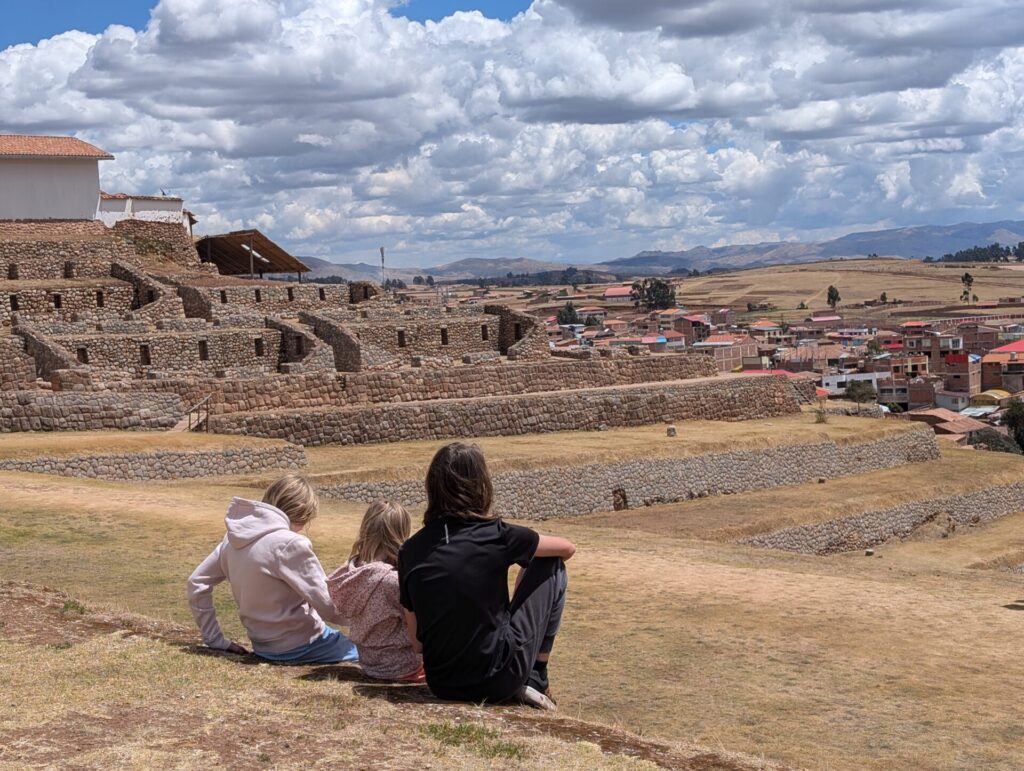
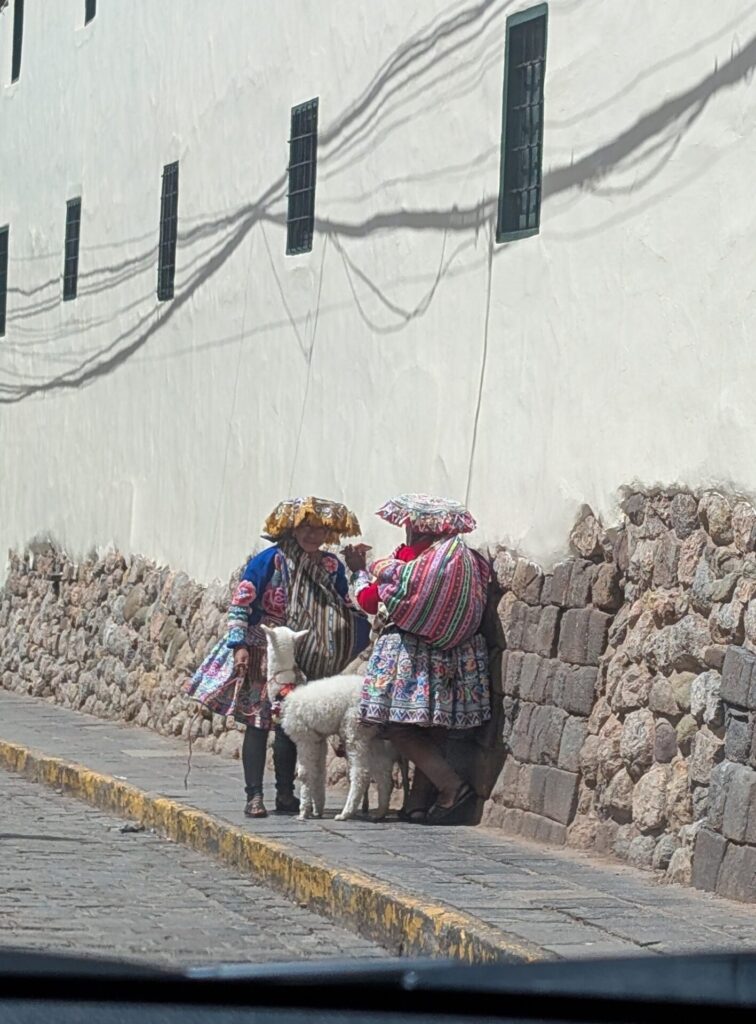


When some of our ward members in Arequipa learned that we were planning a trip to Cusco, they connected us with another member who lives in Cusco, to give us a tour of all the sites.
Sacred Valley Sites
One of the first things every guide at every site explained was that the people who built all of this history were not called “Inkas”. It was the Quechuan people. Inka refers only to the ruler, or depending on the source, the small class of ruling elite. So when your history books refer to the Inka empire, that’s the equivalent of saying the Caesar empire, and ignoring the rest of the Roman people.
Our first full day in Cusco began with a visit to the Moray Terraces. It was quite a sight. These organized terraces on hillsides looked like a giant amphitheater carved into the earth. They were designed to support the growth of crops like potatoes and corn. This method allowed the plants to get the right amount of soil and water to balance the rainy and dry seasons. Today, many of these sites are preserved for their historical value, showcasing the agricultural techniques used by people from the 13th to 16th centuries. However, Peruvians still use similar terraced layouts for farming today.

The Maras Salt Pans are another incredible sight, dating back to the Inca era. There are over 6,000 individual ponds being fed by a natural underground saltwater spring. The water flows into the pools, evaporates in the sun, and leaves behind vibrant white salt. The color of each pool shows which ones are ready for harvest. The whole process takes about a month, with each pond producing up to 450 pounds of salt. Local families still hand-harvest the salt today. As we neared closer, the air was thick with heat, and we could almost taste the salt rising from the ponds.
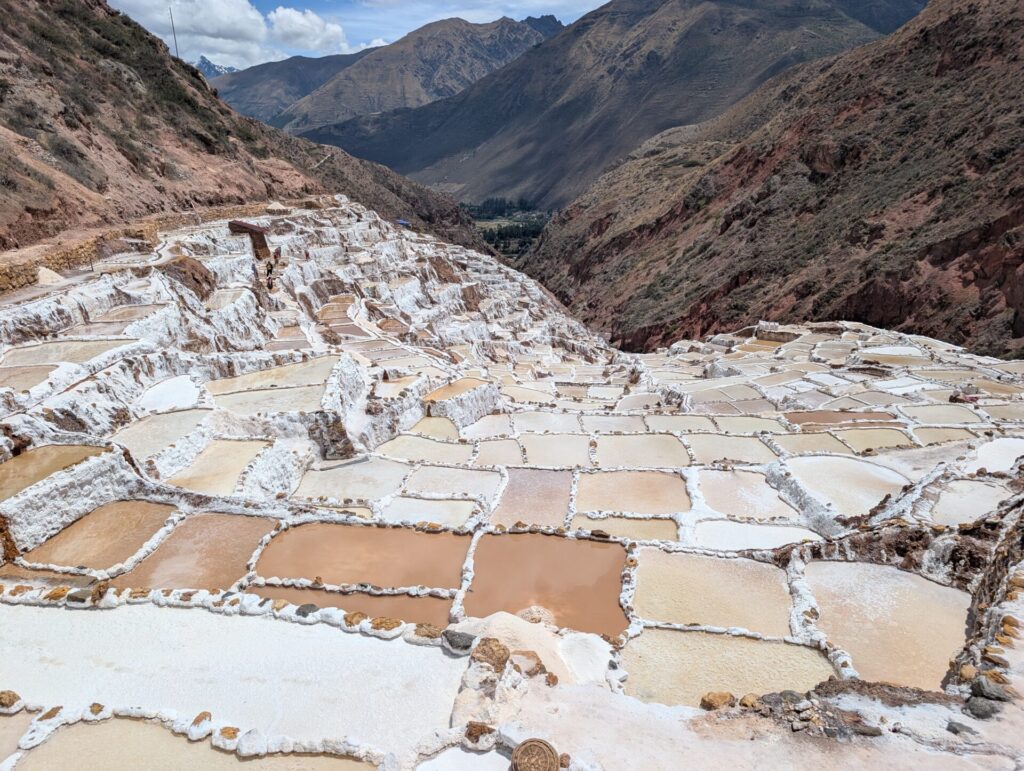
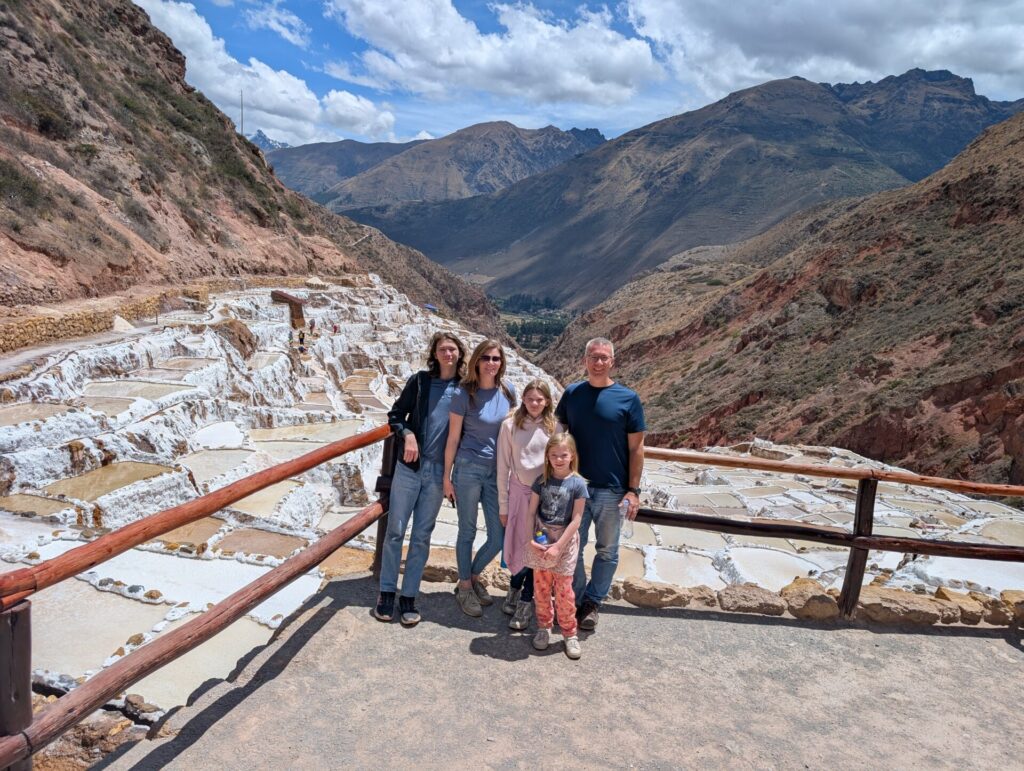
Over the next few days, we visited the ruins of Pisac, Ollantaytambo, and Sacsayhuamán. Each site had its own distinct layout and story of the people who once lived there. The most fascinating connection among them is the legend of the condor, puma, and serpent, representing the celestial, terrestrial, and underworld realms—a holistic vision rooted in Inca spirituality and worldview. These animal icons are found all over Peru, still holding strong in modern Andean culture through traditional art, regional flags, and as inspiration for spiritual and cultural preservation. Everywhere we’ve gone, these symbols have been pointed out to us, carrying forward the enduring legacy of Andean faith.
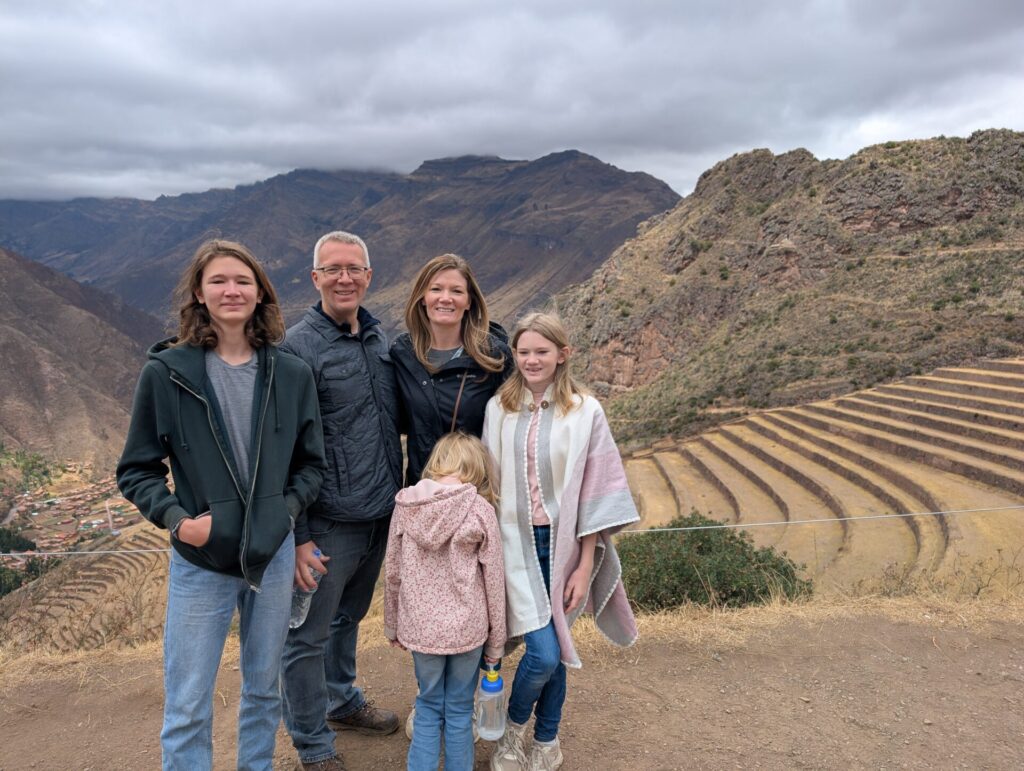
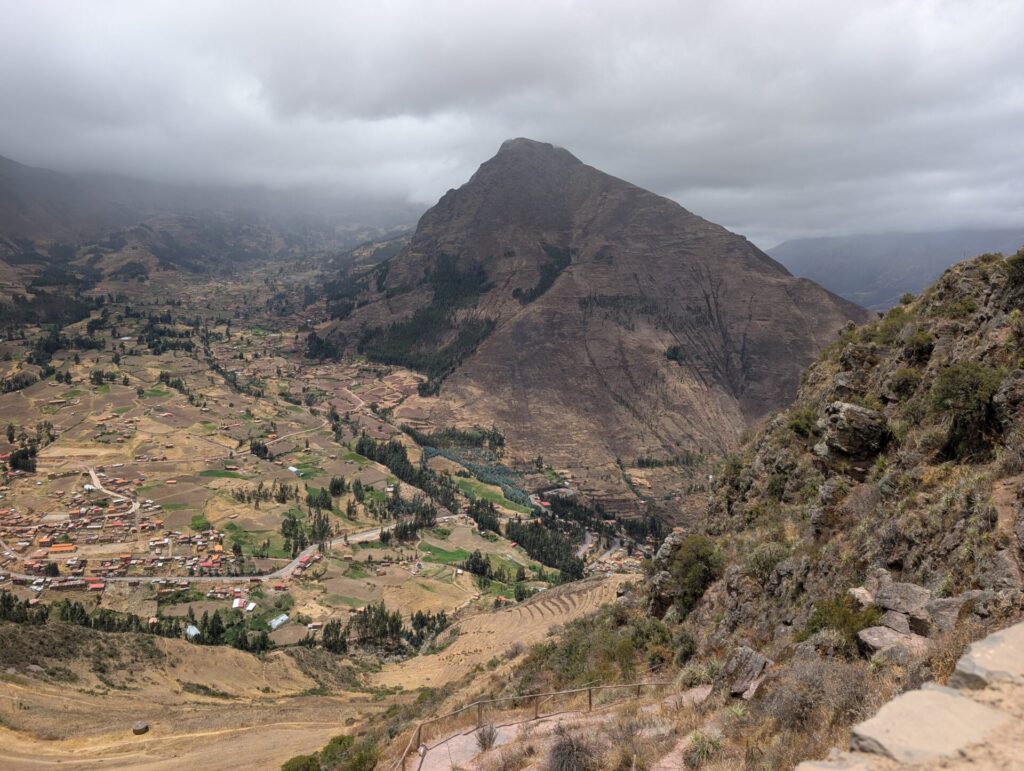
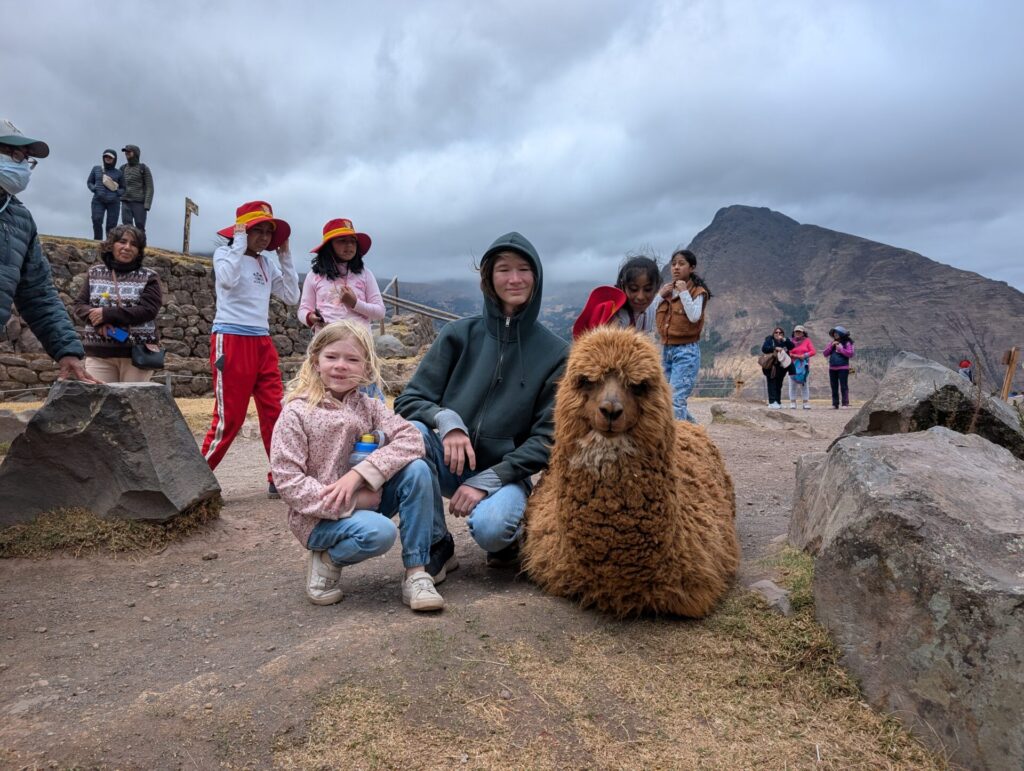
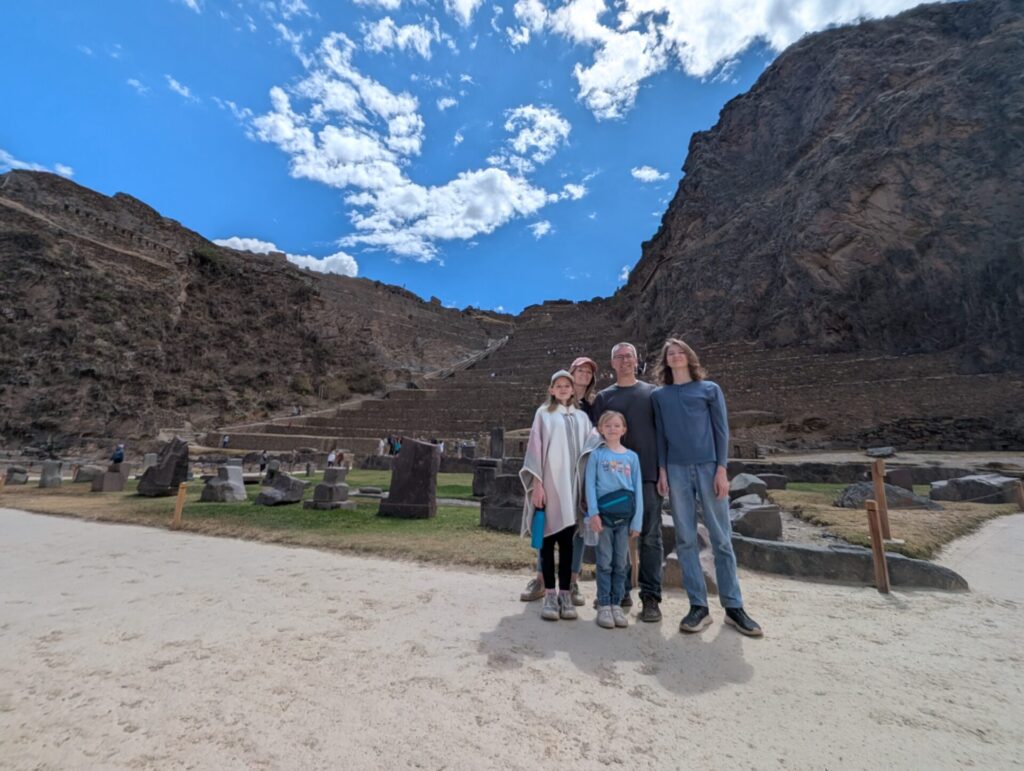
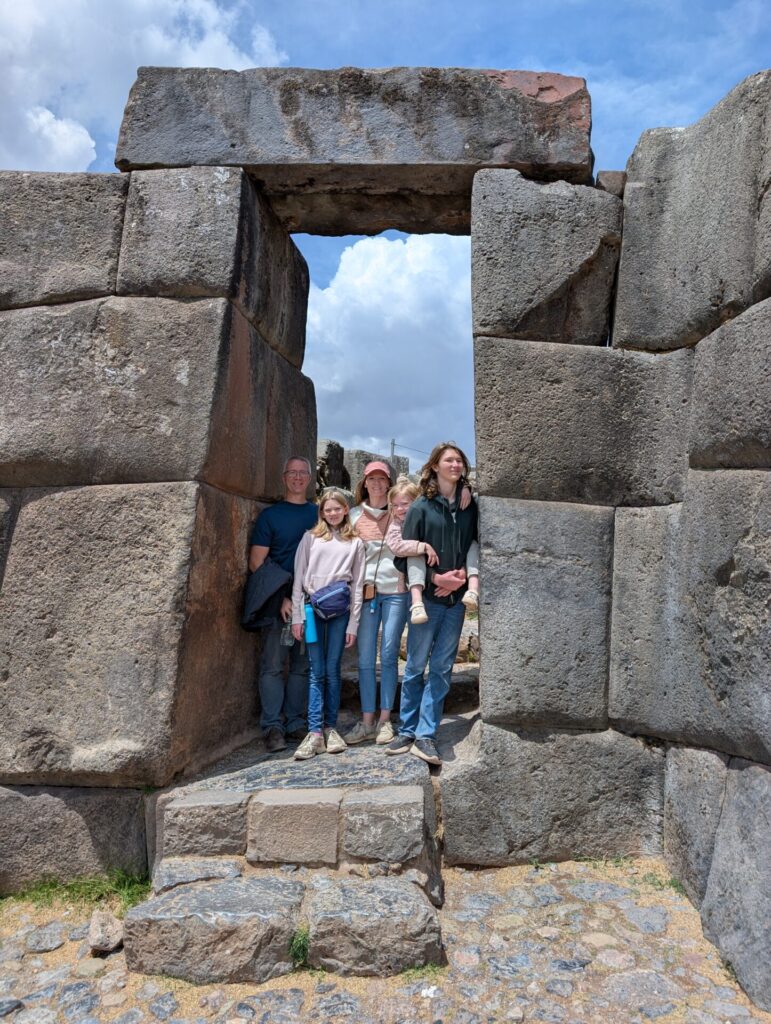
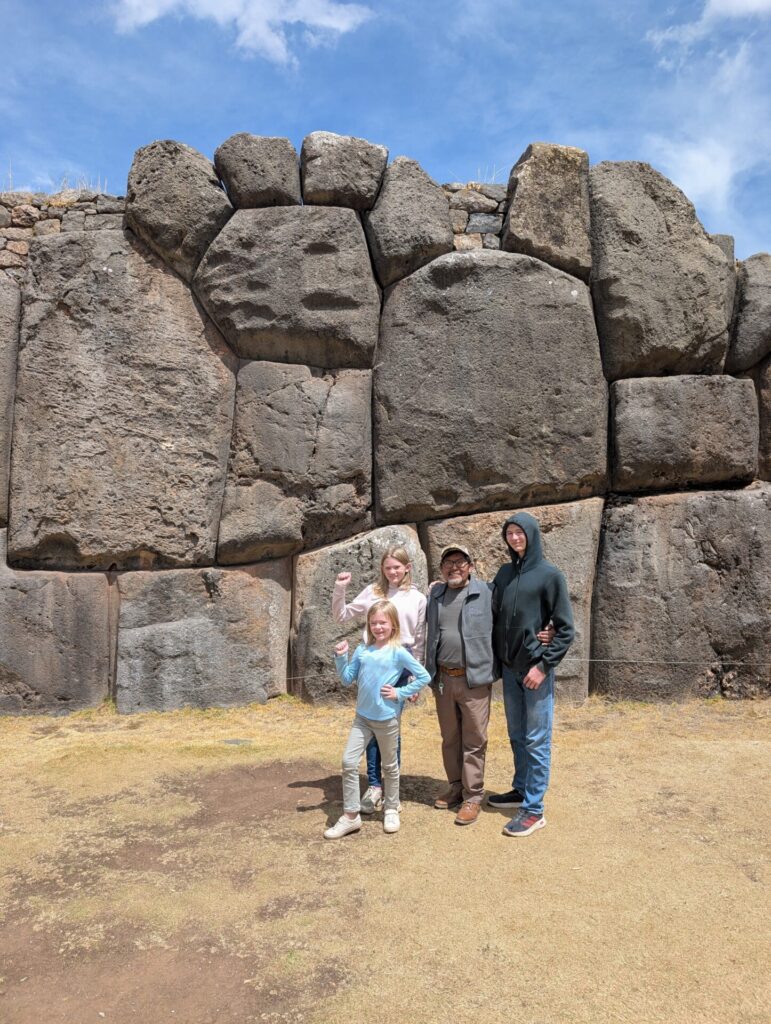
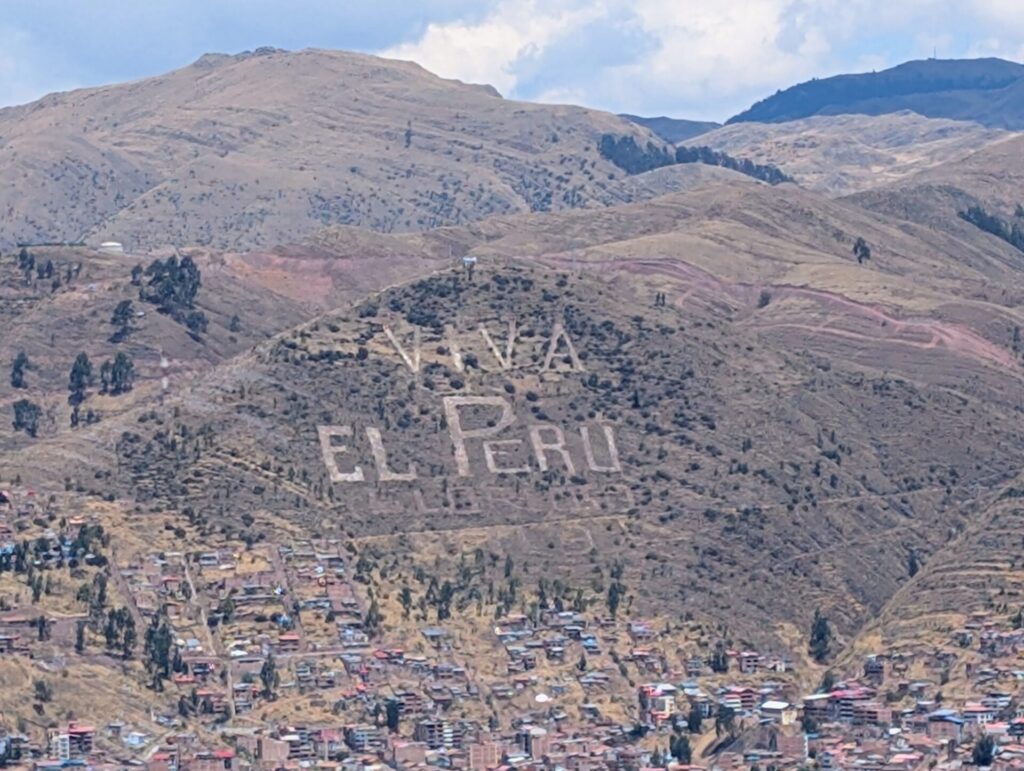
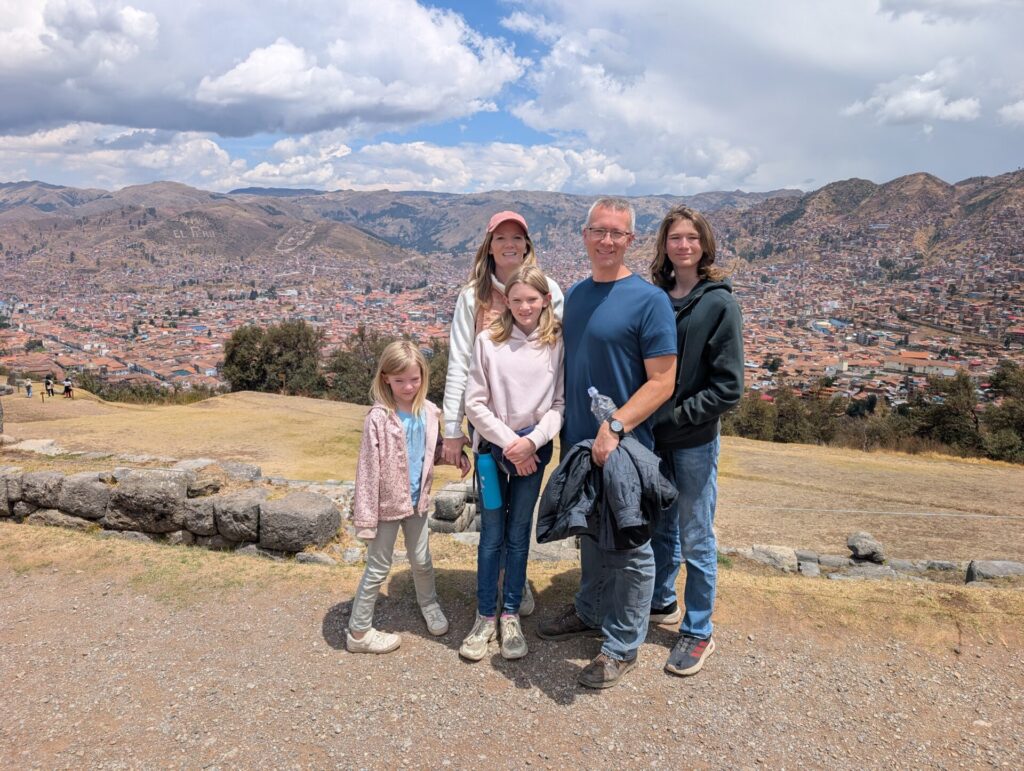
We found it interesting at the temple at Qorikancha, our guide pointed out the rooms designated as the Temple of the Stars, Temple of the Moon, and the grandest, the Temple of the Sun. The parallel to today’s Temple worship progression may just be a coincidence, or it could indicate that these ancient people once knew the same things we are taught today.
What really stands out about the architecture of the Quechuan people is the meticulous stone work used on their most sacred sites. One of the core values of the people was “don’t be lazy” – and it shows! These stone walls are ridiculously sturdy. And the precision with which every stone is cut to fit without mortar is legendary. Not to mention the sheer mass of some of these stones carried uphill from distant quarries. These people have my respect!
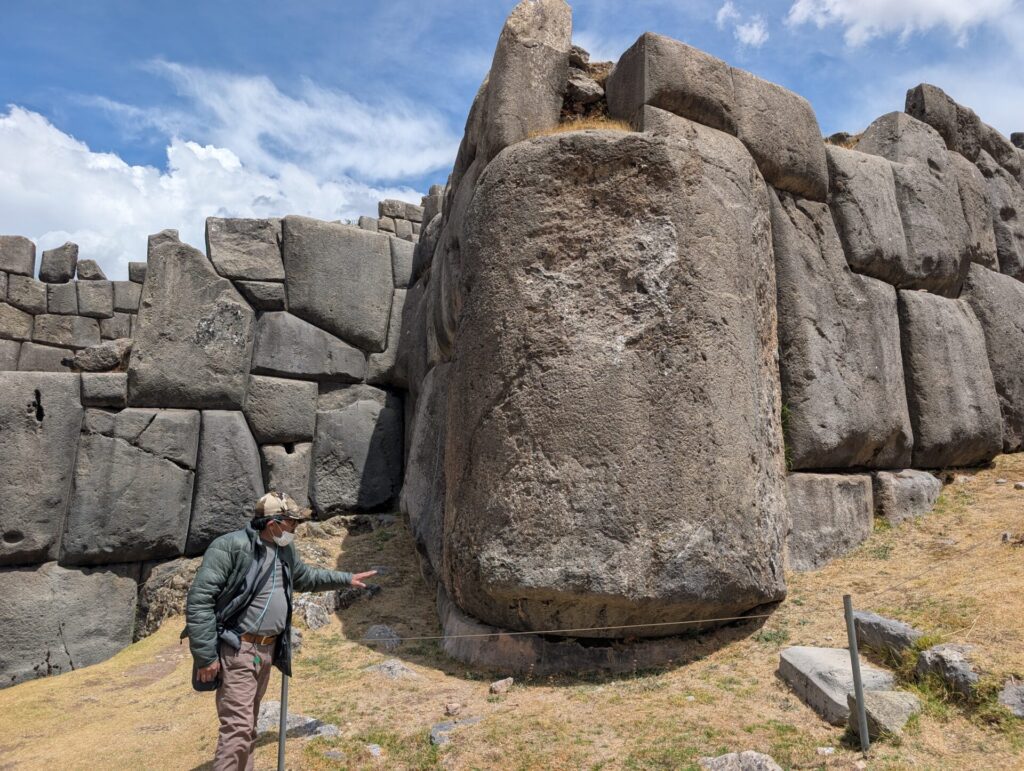
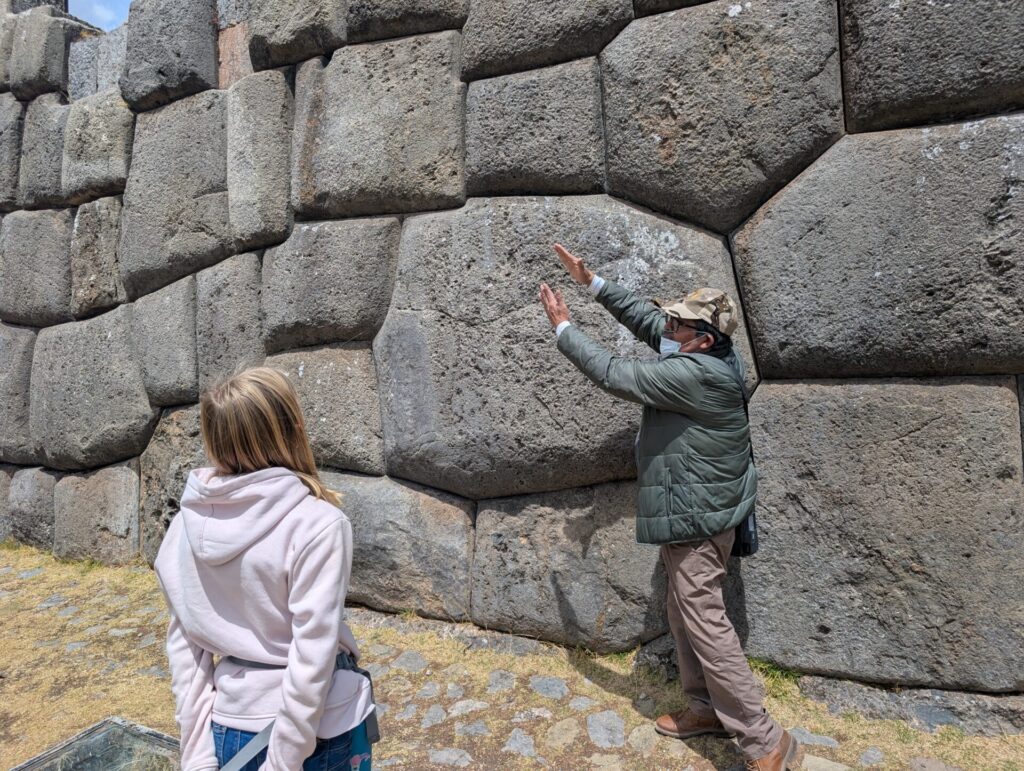
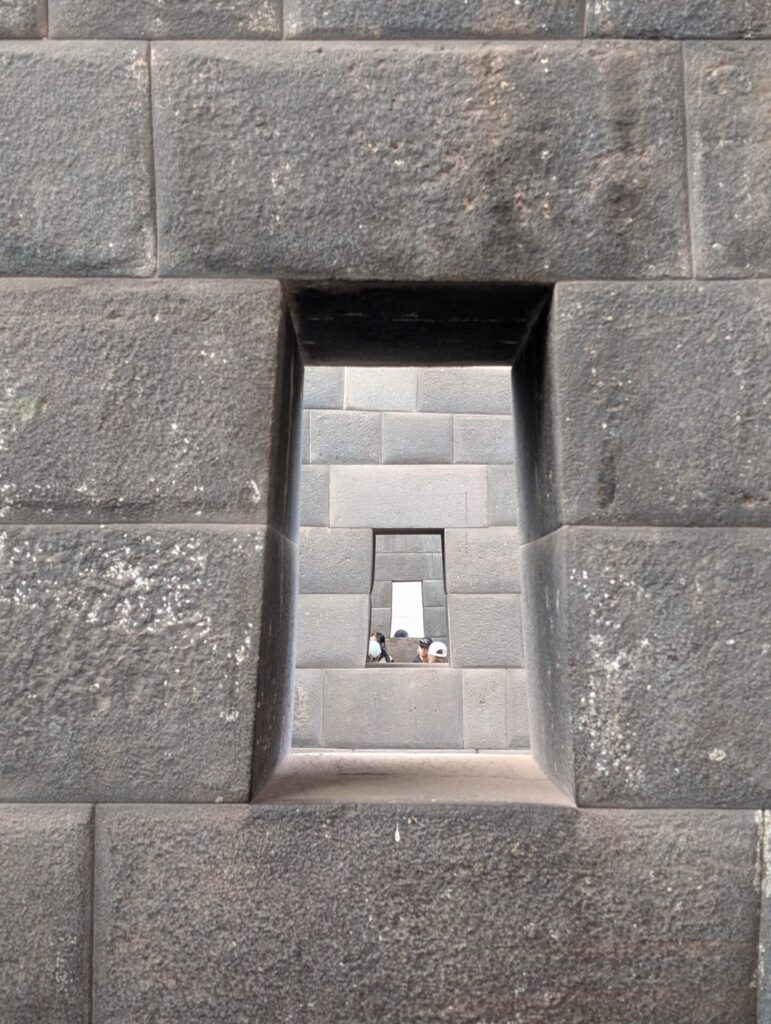
We had a blast with some extra activities, like a chocolate-making class and hummingbird watching. We discovered how Peruvians harvest cocoa beans and even made our own chocolate molds from scratch. Wearing aprons and the most unflattering chef hats, we roasted, shelled, mashed, and melted the beans into a paste, then mixed in sugar, milk, and any flavors we wanted. It was such a fun experience!



Hummingbird watching took place in a local’s backyard, bursting with colorful flowers. We settled on the porch, armed with a bird identification map and a couple of flower rings filled with sugar water, and waited. After a while, we were delighted by numerous hummingbirds of all sizes and colors. The kids took turns holding the flower rings, each greeted by a hungry bird. We enjoyed it so much that we hope to create something like it ourselves one day.
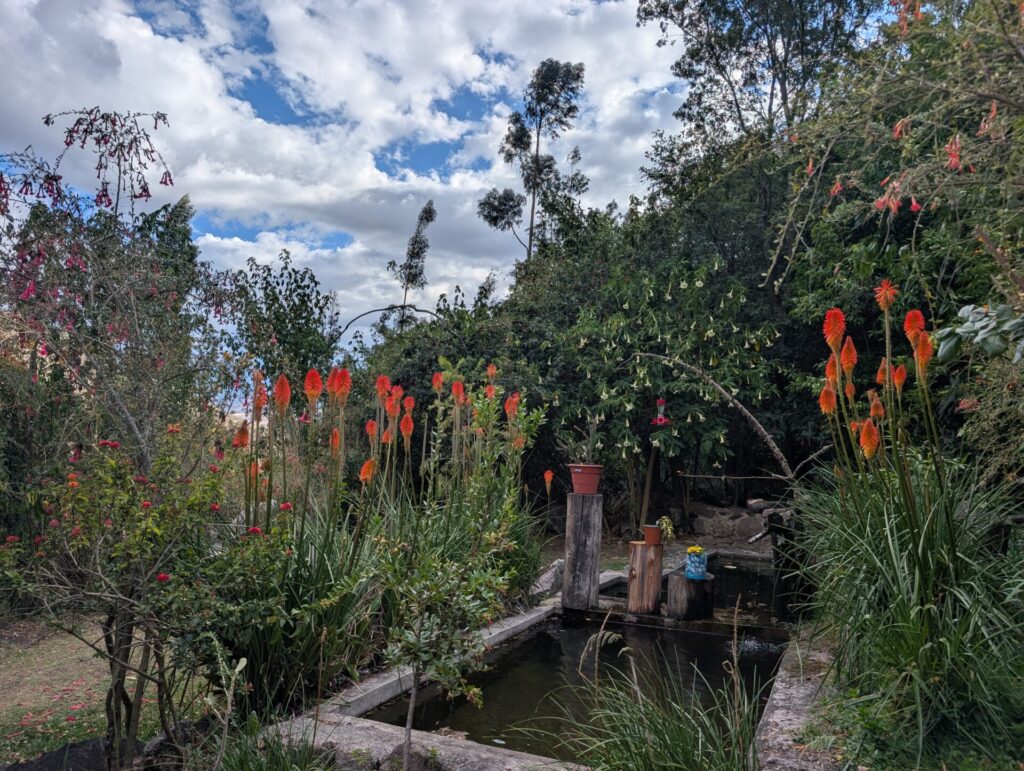

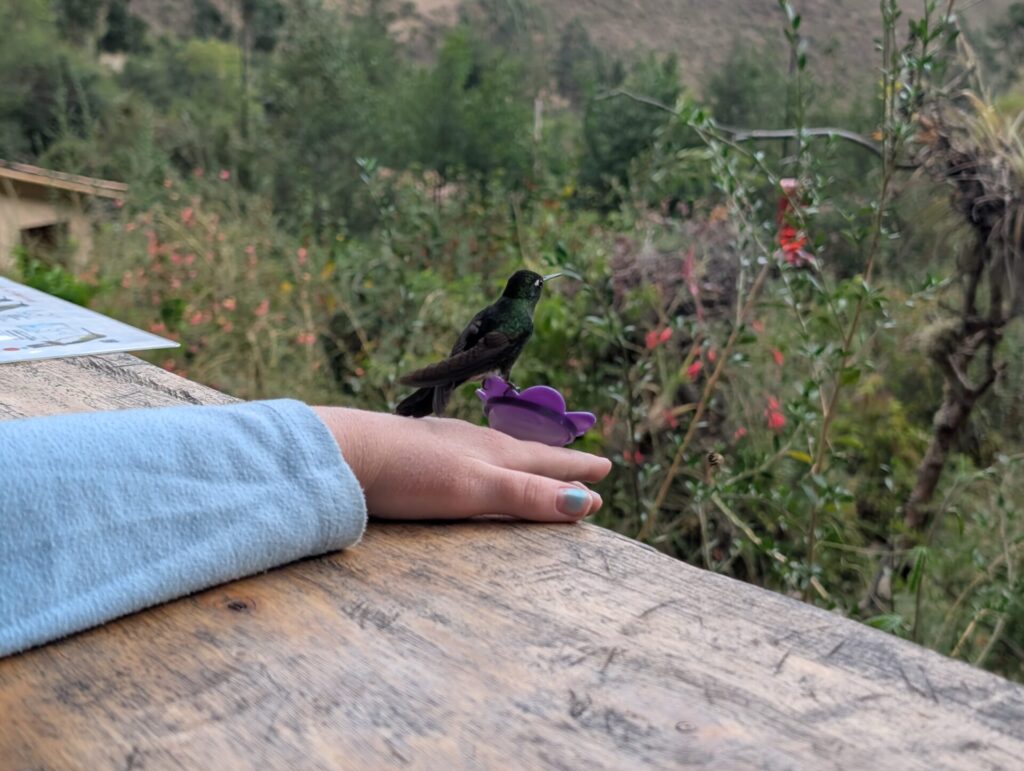
Palccoyo (aka Rainbow Mountain)
High in the Peruvian Andes lies a mountainside streaked with natural bands of red, green, yellow, and purple—colors formed by mineral-rich layers over millions of years. The view was still breathtaking, with the stripes of color leaving a lasting impression. We underestimated the mountain’s 5,200-meter height and hadn’t prepared for the cold, so by the time we reached the top, we were met with pea-sized hail. Because of the weather, we only stayed long enough to snap a few photos before hurrying back down to the warmth of the car. As spectacular as Rainbow Mountain was, the drive there was even more magical, passing through what felt like a dreamlike sanctuary for alpacas, grazing across uniquely textured hillsides.
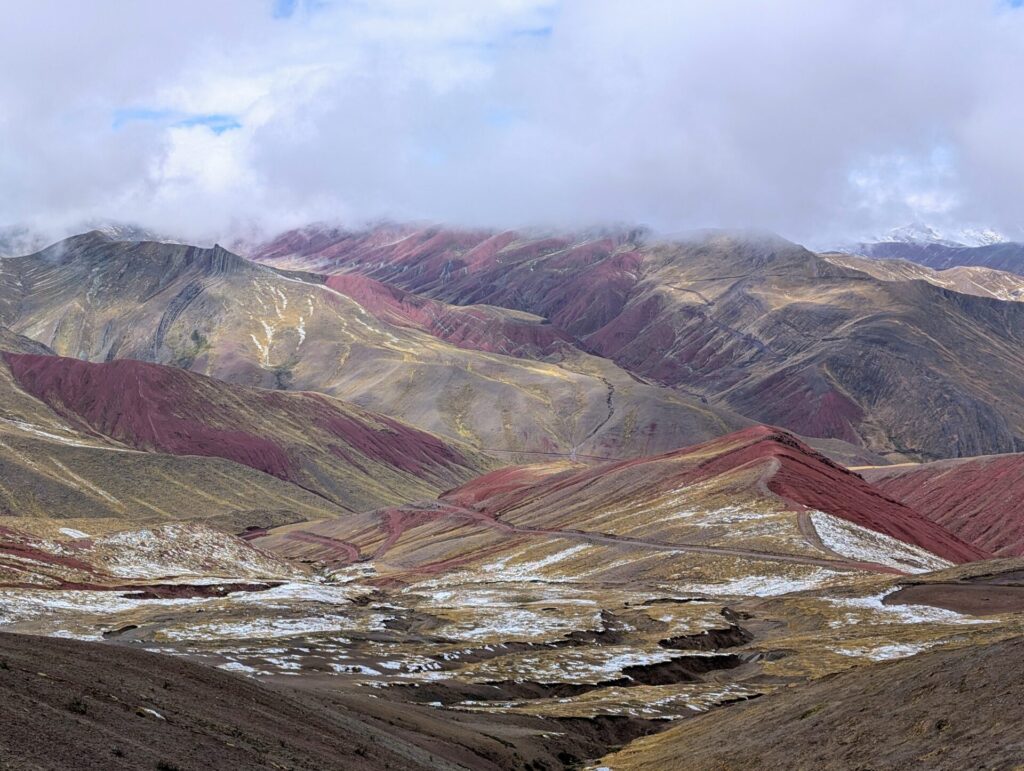
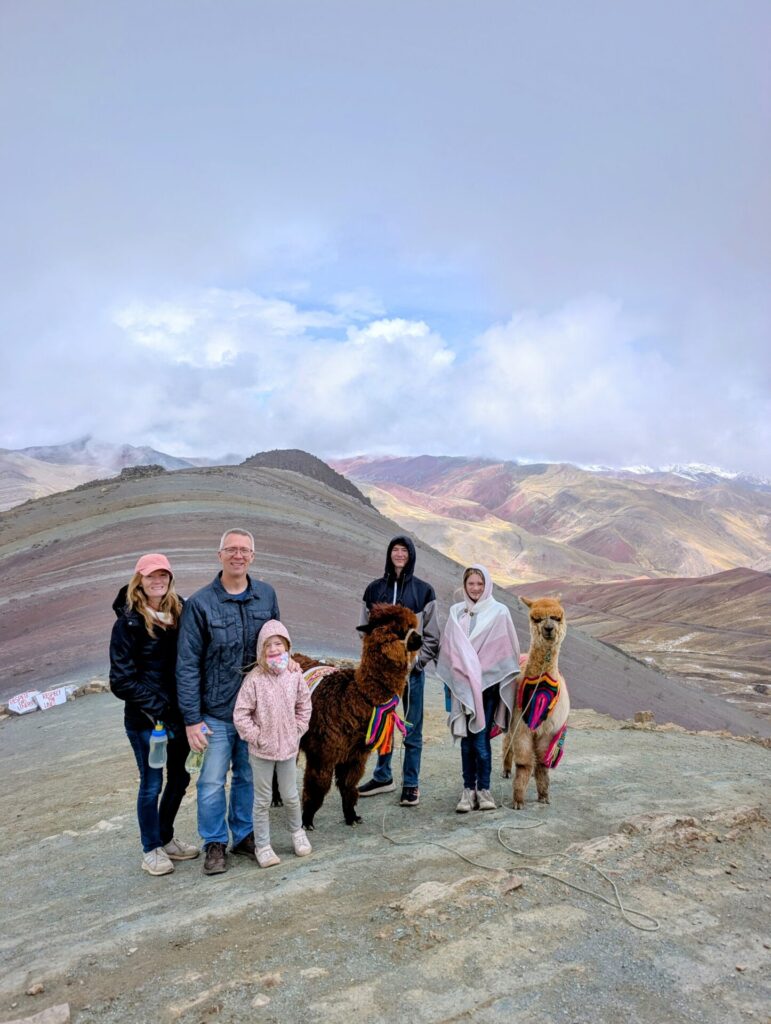

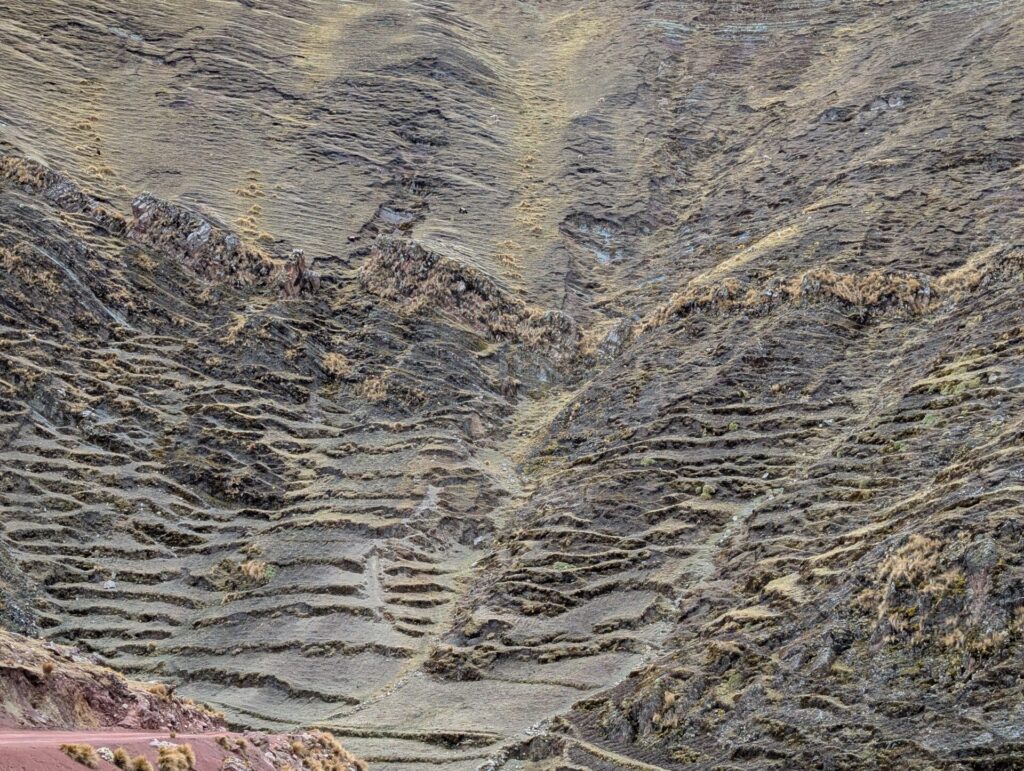
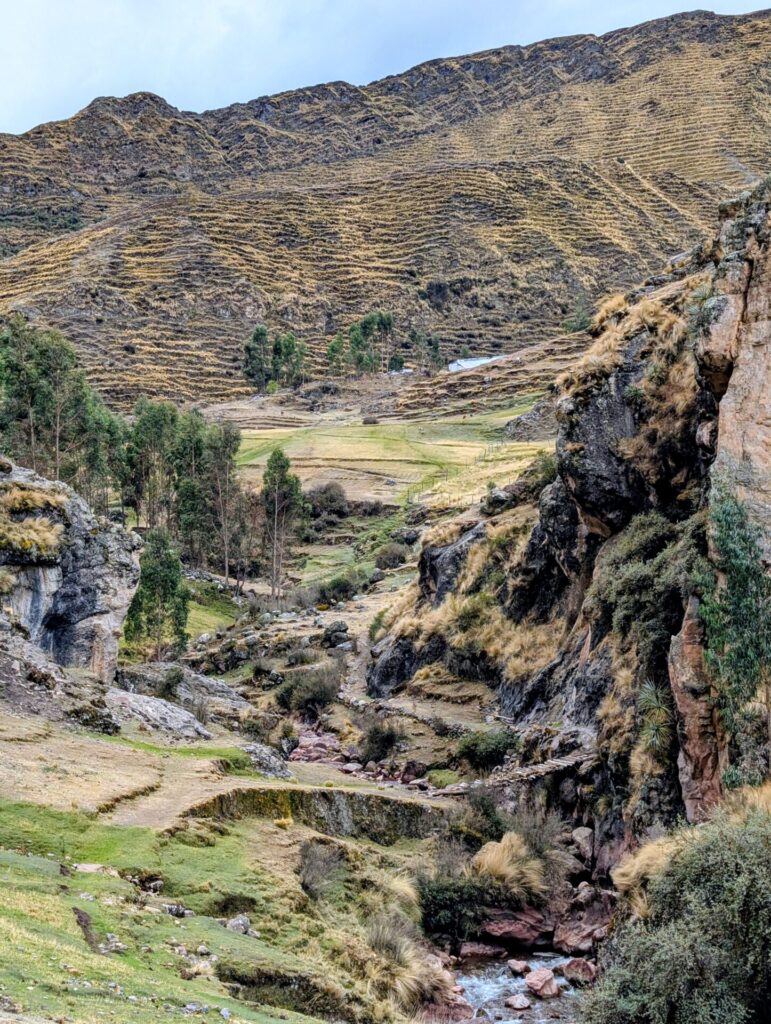
Machu Picchu
If there was ever a historical site turned into a tourist trap, this would be it. The only way in and out of Machu Picchu is by train from the small town of Ollantaytambo. And it’s no ordinary ride—it’s a fanfare of dancing, music, and a theatrical Incan romance performance. Quite the spectacle. Upon arrival in the town built purely for tourism, you’re met with a flood of restaurants and souvenir shops, much like being on a cruise ship. Anything you might want to buy, eat, or experience is right there, with locals eagerly coaxing you inside. Thankfully, our tour guide—recommended by our previous guide in the Sacred Valley—was waiting to whisk us away to our reserved hotel.
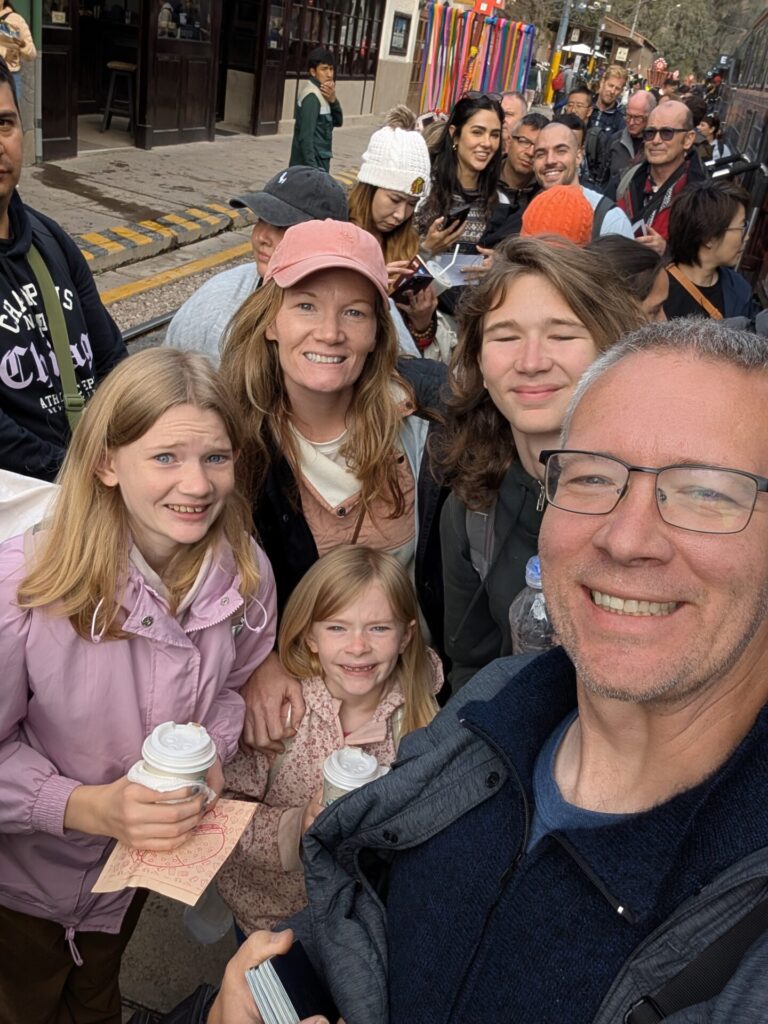
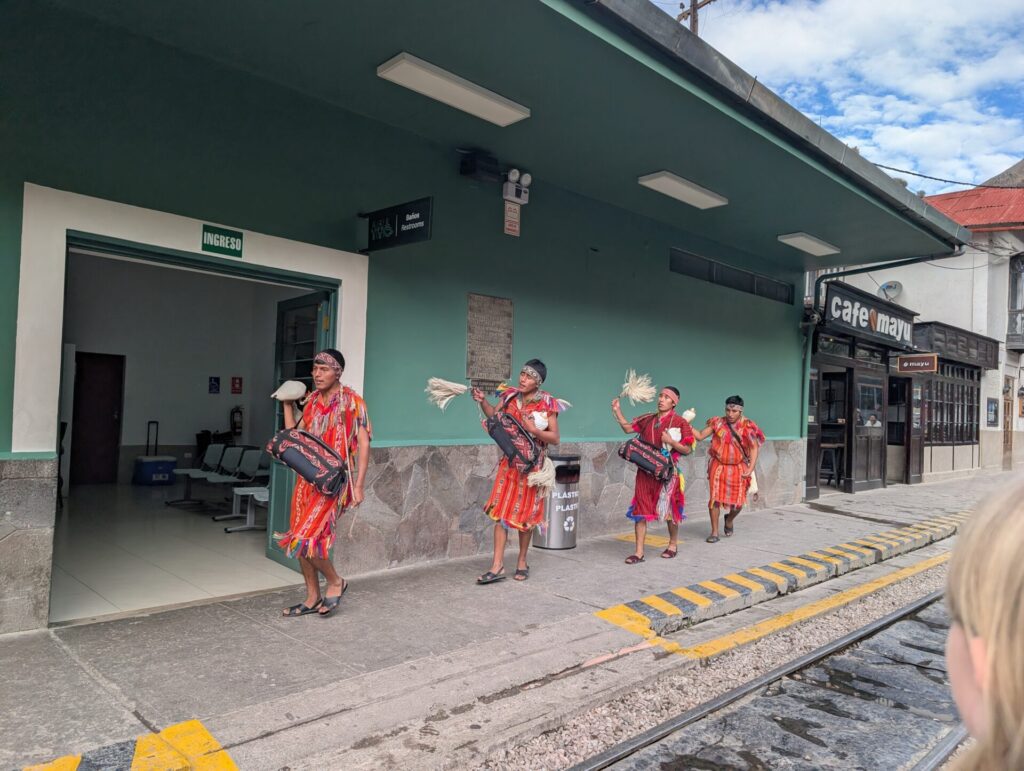
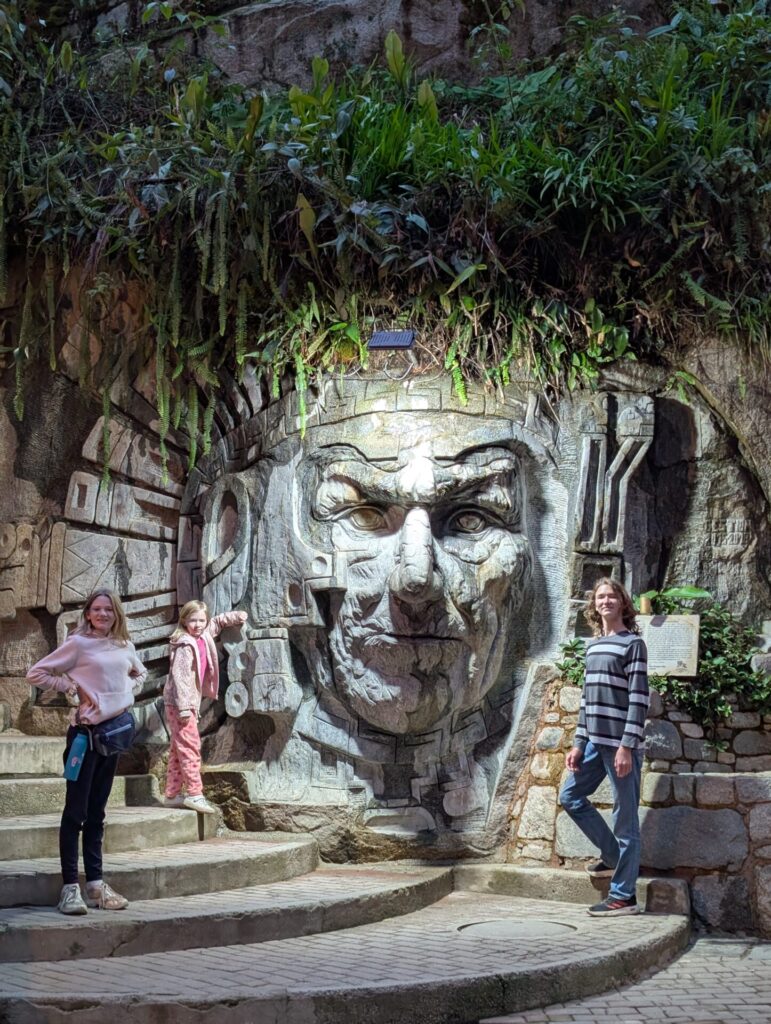
We only stayed for a couple nights, which honestly was plenty for our family. However, Phil and I hope to come back and do the four-day hike into Machu Picchu where we will get to see and experience more with less crowds (bucket-list). Our first day included the overlook of Machu Picchu and a hike. Our only options to the top were a two-hour walk or 20min bus ride. Of course we opted for the bus, as it was raining until after we reached the overlook. Just in time to fight our way into a few picture spots. The view was truly breathtaking and bonus- it was warm and humid. We have really missed the humidity!
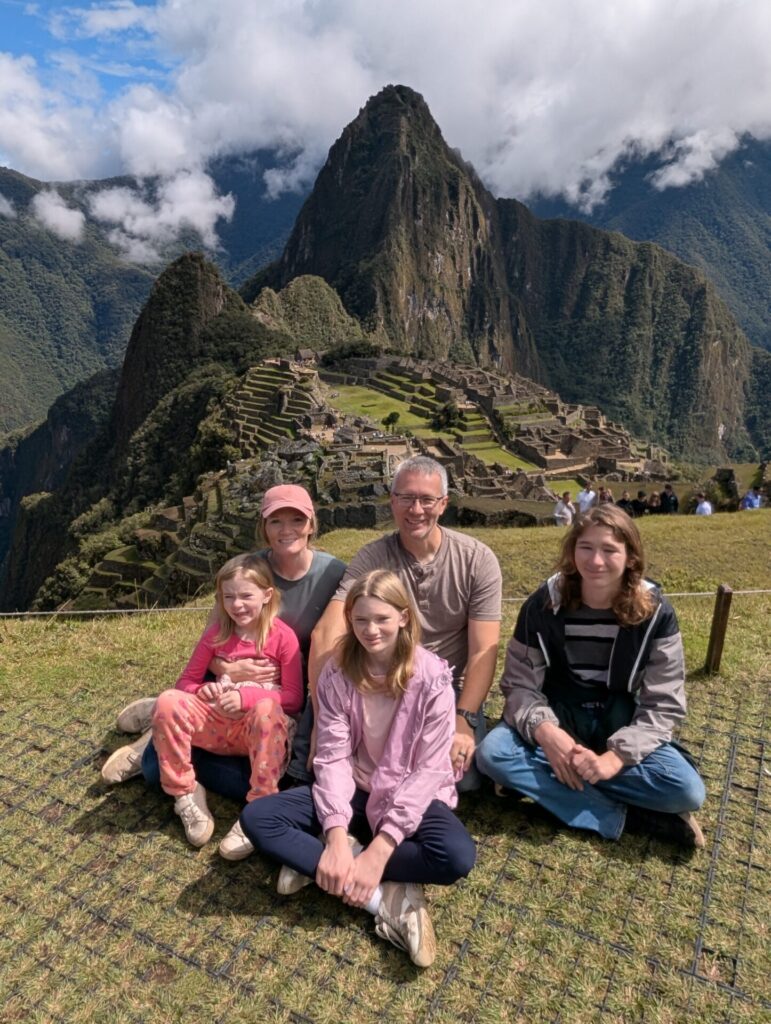
Our hike lasted as long as the kids could handle, and since Hallie was having the toughest time, we made her our “tour guide,” which made it easier for her. She had us stop more often than we would have on our own, but it turned out to be exactly what we needed—slowing down, soaking in the views, and noticing the plants, flowers, and insects we might have missed. She even led us in a meditation, and I didn’t realize how tense I was until then—it really helped. I’m grateful we got to see the hike through a child’s eyes; that alone made it so much more enjoyable.
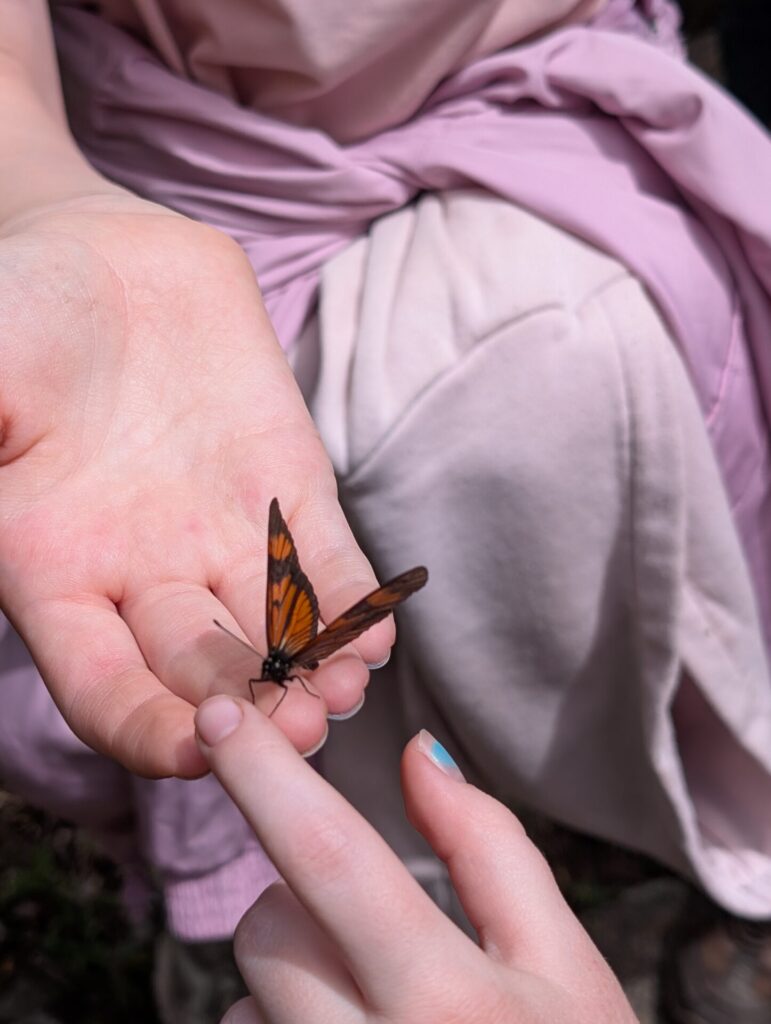

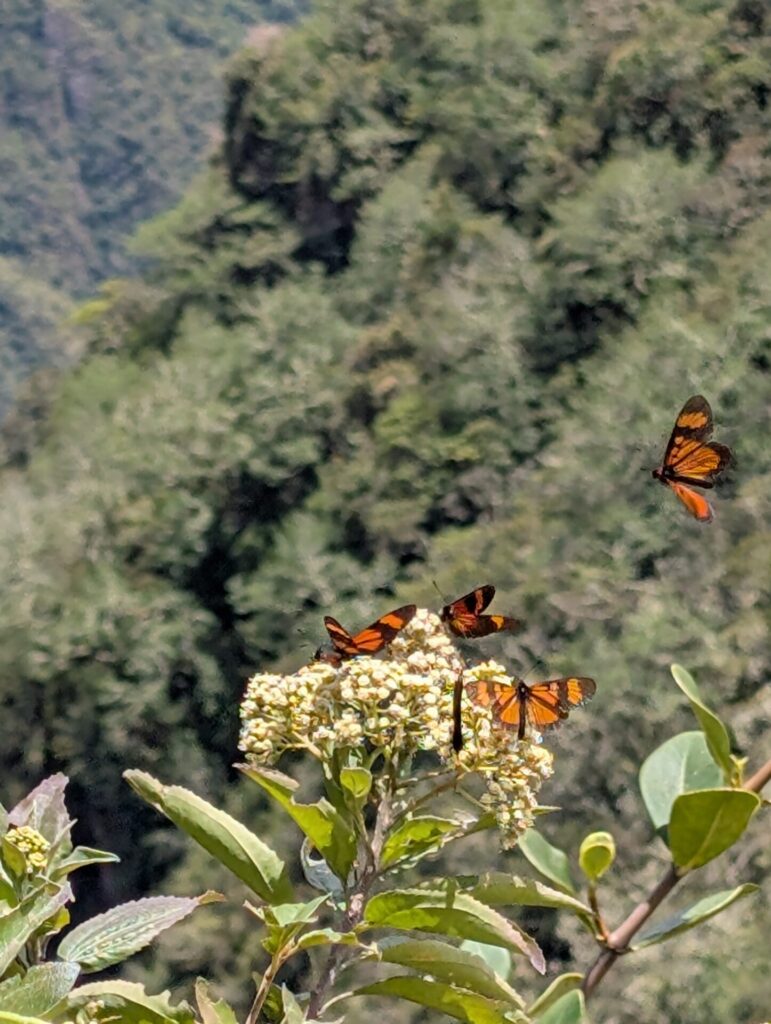
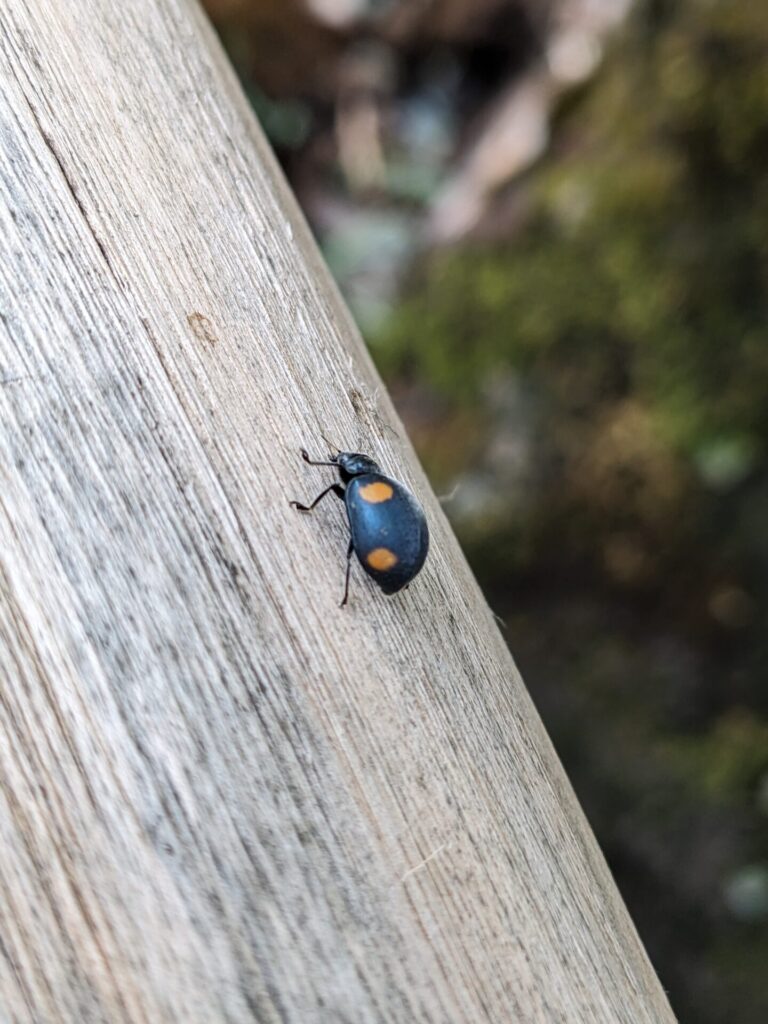
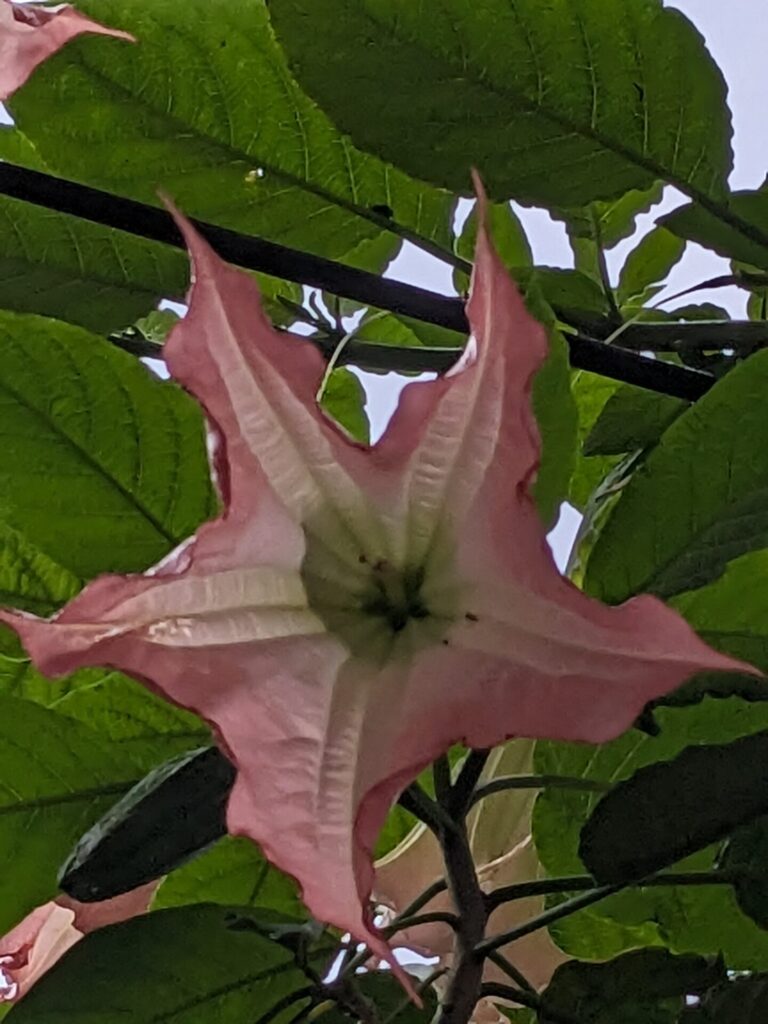

On our last day, we explored the ancient village of Machu Picchu. Built around 1450, it’s believed by locals to have been a royal estate for the Incan emperor Pachacuti, and it was abandoned roughly a century later during the Spanish conquest. Machu Picchu remained hidden in the jungle until its discovery in 1911. It’s known as one of the seven wonders of the world and rightfully so. Not that the ruins themselves are any more spectacular than those at other sites, but can you imagine building a stone city at a peak in some of the steepest, most difficult terrain in the world? The setting is stunning.

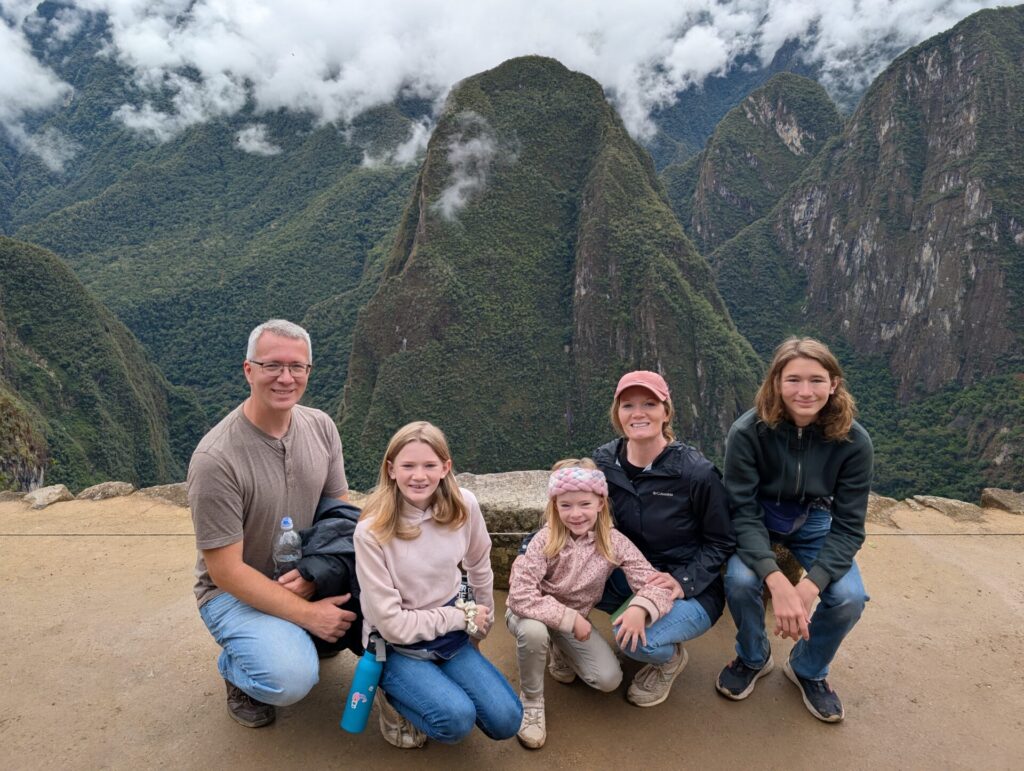

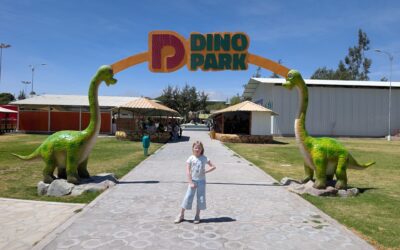
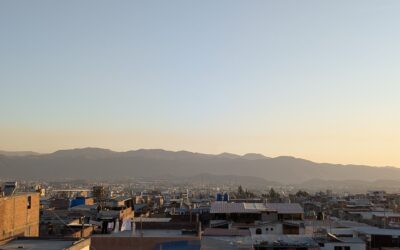
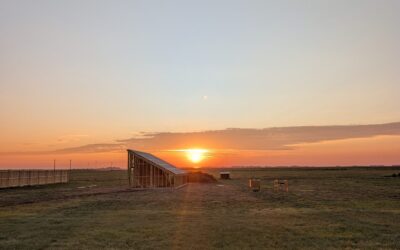
0 Comments